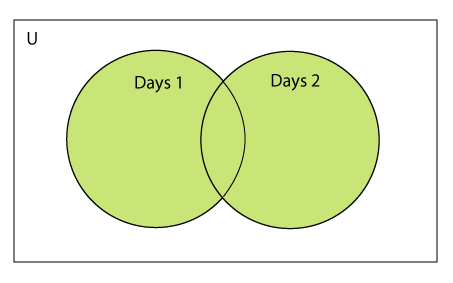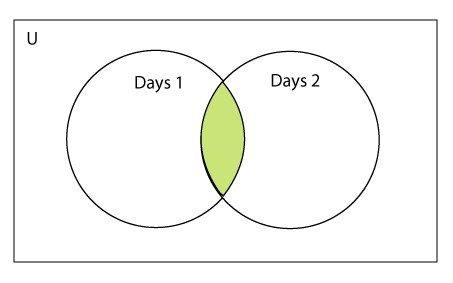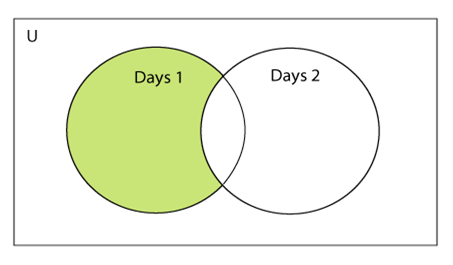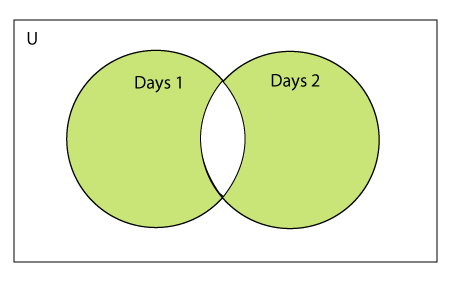Python Set
A Python set is the collection of the unordere items. Each element in the set must be unique, and immutable, and the sets remove the duplicate elements. Sets are mutable which means we can modify them after its creation.
Unlike other collections in Python, there is no index attached to the elements of the set, i.e., we cannot directly access any element of the set by the index. However, we can print them all together, or we can get the list of elements by looping through the set.
Creating a set
The set can be created by enclosing the comma-separated immutable items with the curly braces {}. Python also provides the set() method, which can be used to create the set by the passed sequence.
Example 1: Using curly braces
Output:
{'Friday', 'Tuesday', 'Monday', 'Saturday', 'Thursday', 'Sunday', 'Wednesday'}
<class 'set'>
looping through the set elements ...
Friday
Tuesday
Monday
Saturday
Thursday
Sunday
Wednesday
Example 2: Using set() method
Output:
{'Friday', 'Wednesday', 'Thursday', 'Saturday', 'Monday', 'Tuesday', 'Sunday'}
<class 'set'>
looping through the set elements ...
Friday
Wednesday
Thursday
Saturday
Monday
Tuesday
Sunday
It can contain any type of element such as integer, float, tuple, etc. But mutable elements (list, dictionary, set) can't be a member of set. Consider the following example.
Output:
<class 'set'>
Traceback (most recent call last)
<ipython-input-5-9605bb6fbc68> in <module>
4
5 #Creating a set which holds mutable elements
----> 6 set2 = {1,2,3,["Javatpoint",4]}
7 print(type(set2))
TypeError: unhashable type: 'list'
In the above code, we have created two sets, the set set1 have immutable elements and set2 have one mutable element as a list. While checking the type of set2, it raised an error, which means set can contain only immutable elements.
Creating an empty set is a bit different because empty curly {} braces are also used to create a dictionary as well. So Python provides the set() method used without an argument to create an empty set.
Output:
<class 'dict'> <class 'set'>
Let's see what happened if we provide the duplicate element to the set.
Output:
Return set with unique elements: {1, 2, 4, 5, 8, 9, 10}
In the above code, we can see that set5 consisted of multiple duplicate elements when we printed it remove the duplicity from the set.
Adding items to the set
Python provides the add() method and update() method which can be used to add some particular item to the set. The add() method is used to add a single element whereas the update() method is used to add multiple elements to the set. Consider the following example.
Example: 1 - Using add() method
Output:
printing the original set ...
{'February', 'May', 'April', 'March', 'June', 'January'}
Adding other months to the set...
Printing the modified set...
{'February', 'July', 'May', 'April', 'March', 'August', 'June', 'January'}
looping through the set elements ...
February
July
May
April
March
August
June
January
To add more than one item in the set, Python provides the update() method. It accepts iterable as an argument.
Consider the following example.
Example - 2 Using update() function
Output:
printing the original set ...
{'January', 'February', 'April', 'May', 'June', 'March'}
updating the original set ...
printing the modified set ...
{'January', 'February', 'April', 'August', 'October', 'May', 'June', 'July', 'September', 'March'}
Removing items from the set
Python provides the discard() method and remove() method which can be used to remove the items from the set. The difference between these function, using discard() function if the item does not exist in the set then the set remain unchanged whereas remove() method will through an error.
Consider the following example.
Example-1 Using discard() method
Output:
printing the original set ...
{'February', 'January', 'March', 'April', 'June', 'May'}
Removing some months from the set...
Printing the modified set...
{'February', 'March', 'April', 'June'}
looping through the set elements ...
February
March
April
June
Python provides also the remove() method to remove the item from the set. Consider the following example to remove the items using remove() method.
Example-2 Using remove() function
Output:
printing the original set ...
{'February', 'June', 'April', 'May', 'January', 'March'}
Removing some months from the set...
Printing the modified set...
{'February', 'June', 'April', 'March'}
We can also use the pop() method to remove the item. Generally, the pop() method will always remove the last item but the set is unordered, we can't determine which element will be popped from set.
Consider the following example to remove the item from the set using pop() method.
Output:
printing the original set ...
{'June', 'January', 'May', 'April', 'February', 'March'}
Removing some months from the set...
Printing the modified set...
{'May', 'April', 'February', 'March'}
In the above code, the last element of the Month set is March but the pop() method removed the June and January because the set is unordered and the pop() method could not determine the last element of the set.
Python provides the clear() method to remove all the items from the set.
Consider the following example.
Output:
printing the original set ...
{'January', 'May', 'June', 'April', 'March', 'February'}
Removing all the items from the set...
Printing the modified set...
set()
Difference between discard() and remove()
Despite the fact that discard() and remove() method both perform the same task, There is one main difference between discard() and remove().
If the key to be deleted from the set using discard() doesn't exist in the set, the Python will not give the error. The program maintains its control flow.
On the other hand, if the item to be deleted from the set using remove() doesn't exist in the set, the Python will raise an error.
Consider the following example.
Example-
Output:
printing the original set ...
{'March', 'January', 'April', 'June', 'February', 'May'}
Removing items through discard() method...
printing the modified set...
{'March', 'January', 'April', 'June', 'February', 'May'}
Removing items through remove() method...
Traceback (most recent call last):
File "set.py", line 9, in
Months.remove("Jan")
KeyError: 'Jan'
Python Set Operations
Set can be performed mathematical operation such as union, intersection, difference, and symmetric difference. Python provides the facility to carry out these operations with operators or methods. We describe these operations as follows.
Union of two Sets
The union of two sets is calculated by using the pipe (|) operator. The union of the two sets contains all the items that are present in both the sets.

Consider the following example to calculate the union of two sets.
Example 1: using union | operator
Output:
{'Friday', 'Sunday', 'Saturday', 'Tuesday', 'Wednesday', 'Monday', 'Thursday'}
Python also provides the union() method which can also be used to calculate the union of two sets. Consider the following example.
Example 2: using union() method
Output:
{'Friday', 'Monday', 'Tuesday', 'Thursday', 'Wednesday', 'Sunday', 'Saturday'}
Intersection of two sets
The intersection of two sets can be performed by the and & operator or the intersection() function. The intersection of the two sets is given as the set of the elements that common in both sets.

Consider the following example.
Example 1: Using & operator
Output:
{'Monday', 'Tuesday'}
Example 2: Using intersection() method
Output:
{'Martin', 'David'}
Example 3:
Output:
{1,2,5}
The intersection_update() method
The intersection_update() method removes the items from the original set that are not present in both the sets (all the sets if more than one are specified).
The intersection_update() method is different from the intersection() method since it modifies the original set by removing the unwanted items, on the other hand, the intersection() method returns a new set.
Consider the following example.
Output:
{'castle'}
Difference between the two sets
The difference of two sets can be calculated by using the subtraction (-) operator or intersection() method. Suppose there are two sets A and B, and the difference is A-B that denotes the resulting set will be obtained that element of A, which is not present in the set B.

Consider the following example.
Example 1 : Using subtraction ( - ) operator
Output:
{'Thursday', 'Wednesday'}
Example 2 : Using difference() method
Output:
{'Thursday', 'Wednesday'}
Symmetric Difference of two sets
The symmetric difference of two sets is calculated by ^ operator or symmetric_difference() method. Symmetric difference of sets, it removes that element which is present in both sets. Consider the following example:

Example - 1: Using ^ operator
Output:
{3, 4, 5, 6, 8, 9, 10}
Example - 2: Using symmetric_difference() method
Output:
{3, 4, 5, 6, 8, 9, 10}
Set comparisons
Python allows us to use the comparison operators i.e., <, >, <=, >= , == with the sets by using which we can check whether a set is a subset, superset, or equivalent to other set. The boolean true or false is returned depending upon the items present inside the sets.
Consider the following example.
Output:
True False False
FrozenSets
The frozen sets are the immutable form of the normal sets, i.e., the items of the frozen set cannot be changed and therefore it can be used as a key in the dictionary.
The elements of the frozen set cannot be changed after the creation. We cannot change or append the content of the frozen sets by using the methods like add() or remove().
The frozenset() method is used to create the frozenset object. The iterable sequence is passed into this method which is converted into the frozen set as a return type of the method.
Consider the following example to create the frozen set.
Output:
<class 'frozenset'>
printing the content of frozen set...
1
2
3
4
5
Traceback (most recent call last):
File "set.py", line 6, in <module>
Frozenset. add(6) #gives an error since we can change the content of Frozenset after creation
AttributeError: 'frozenset' object has no attribute 'add'
Frozenset for the dictionary
If we pass the dictionary as the sequence inside the frozenset() method, it will take only the keys from the dictionary and returns a frozenset that contains the key of the dictionary as its elements.
Consider the following example.
Output:
<class 'dict'> <class 'frozenset'> Name Country ID
Set Programming Example
Example - 1: Write a program to remove the given number from the set.
Output:
Enter the number you want to remove:12
After Removing: {1, 2, 3, 4, 5, 6, 24}
Example - 2: Write a program to add multiple elements to the set.
Output:
{1, 2, 4, 'Apple', 'John', 'CS', 'Mango', 'Grapes'}
Example - 3: Write a program to find the union between two sets.
Output:
{96, 65, 2, 'Joseph', 1, 'Peter', 59}
Example- 4: Write a program to find the intersection between two sets.
Output:
{56, 23}
Example - 5: Write the program to add elements to the frozen sea.
Output:
TypeError: 'frozenset' object does not support item assignment
The above code raised an error because frozen sets are immutable and can't be changed after creation.
Example - 6: Write the program to find the issuperset,subsett, and superset.
Output:
False False True True
Python Built-in set methods
Python contains the following methods to be used with the sets.
| SN | Method | Description |
|---|---|---|
| 1 | add(item) | It adds an item to the set. It has no effect if the item is already present in the set. |
| 2 | clear() | It deletes all the items from the set. |
| 3 | copy() | It returns a shallow copy of the set. |
| 4 | difference_update(....) | It modifies this set by removing all the items that are also present in the specified sets. |
| 5 | discard(item) | It removes the specified item from the set. |
| 6 | intersection() | It returns a new set that contains only the common elements of both sets. (all the sets if more than two are specified). |
| 7 | intersection_update(....) | It removes the items from the original set that are not present in both the sets (all the sets if more than one is specified). |
| 8 | Isdisjoint(....) | Return True if two sets have a null intersection. |
| 9 | Issubset(....) | Report whether another set contains this set. |
| 10 | Issuperset(....) | Report whether this set contains another set. |
| 11 | pop() | Remove and return an arbitrary set element that is the last element of the set. Raises KeyError if the set is empty. |
| 12 | remove(item) | Remove an element from a set; it must be a member. If the element is not a member, raise a KeyError. |
| 13 | symmetric_difference(....) | Remove an element from a set; it must be a member. If the element is not a member, raise a KeyError. |
| 14 | symmetric_difference_update(....) | Update a set with the symmetric difference between itself and another. |
| 15 | union(....) | Return the union of sets as a new set. (i.e. all elements that are in either set.) |
| 16 | update() | Update a set with the union of itself and others. |


0 comments:
Post a Comment
Thanks